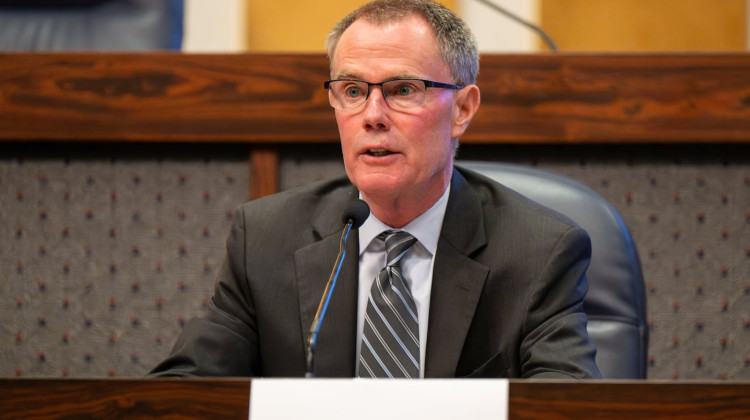
Indianapolis Public Schools will ask around 2,700 students if they'd consider switching to IndyGo and no long rely on the yellow bus for transportation.
PixabayIndianapolis Public Schools Board approved a change Thursday to require around 600 high schoolers to use IndyGo for their sole school transportation in the 2021-22 school year, instead of a traditional yellow bus.
The approval is part of a broader transportation reduction plan that includes enforcing decades-old walk zones at all schools. That means around 2,000 additional K-12 students will be required to walk to school rather than use district transportation.
The reduction in bus service is one of several transportation service changes and part of the district leaders’ plan to chip away at an $18 million budget shortfall, caused by a dip in enrollment this year. The total saving is expected to be $5 million.
In recent years, IPS has viewed IndyGo as a potential solution to its towering transportation cost. The city bus service provides steeply discounted passes to district students. As more students ride the city bus, the district can reduce the number of busses and driving staff.
This change, approved Thursday in a 6-1 vote, is intended for selected students who live near city bus stops and don’t require a transfer to complete the trip to school.
Commissioner Taria Slack (District 5) was the no vote. Slack warned student safety is at risk because city upkeep of lighting, intersections and walkways lags in some parts of the city.
“The accessibility to sidewalks and infrastructure and the actual ability to get on the bus is not equal,” Slack said. “So with that being said, it is very difficult as a parent to vote yes.”
Students required to ride IndyGo must have less than .7-mile total walk distance from home to bus stop and from bus stop to school. The entire trip, including walking, waiting and riding, must be less than 50 minutes total.
The district will also ask around 2,700 more students to consider switching to IndyGo. Those students would be able to transfer buses one time, during a total trip time of one hour.
Commissioner Venita Moore (District 2) urged fellow board members to ride a city bus from near their home to a high school to understand the experience. Moore made the suggestion after a public commenter said IndyGo stops can be unsafe for students.
The district set up a website to explain the changes. Some of the proposed transportation reductions include Walk Zone Enforcement.
IPS implemented “walk zones” around schools in 1998, but enforcement is inconsistent because of road safety issues and a lack of crossing guards. That will change next year, when elementary students who live within 1 mile of their assigned school will not receive bus service. The same goes for middle school students who live within 1.25 miles and high school students who live within 1.5 miles from their schools.
The district will increase the number of crossing guards across the city to help students transverse busy intersections and dangerous roads. Exceptions will be made for some students, including those with special needs and students who are experiencing homelessness.
“This decision didn’t happen overnight. There has been a tremendous amount of research, conversation and many options generated,” said board president Evan Hawkins said in a statement.
The transportation budget made up about 10%, or more than $40 million, of the IPS budget before the pandemic. The high cost is due, in part, to the district providing transportation to students who chose to attend magnet or other non-traditional schools, rather than neighborhood schools.
 DONATE
DONATE








 Support WFYI. We can't do it without you.
Support WFYI. We can't do it without you.